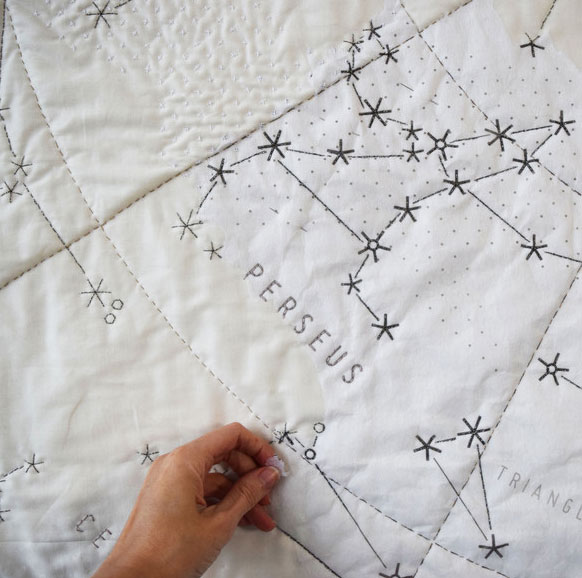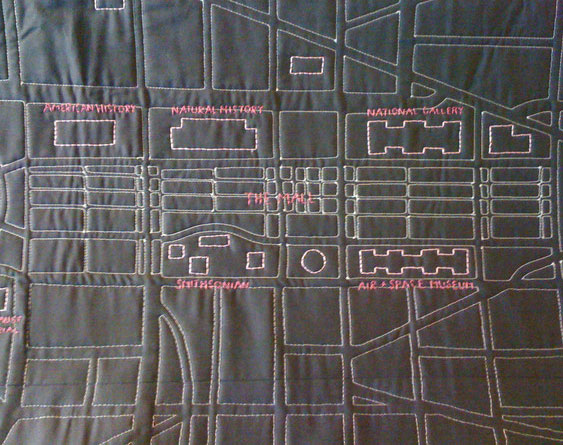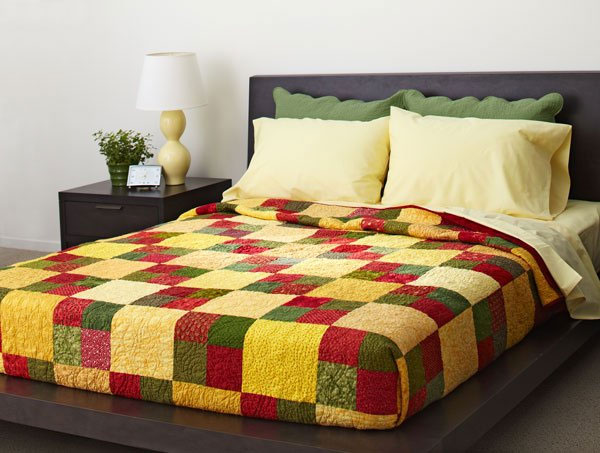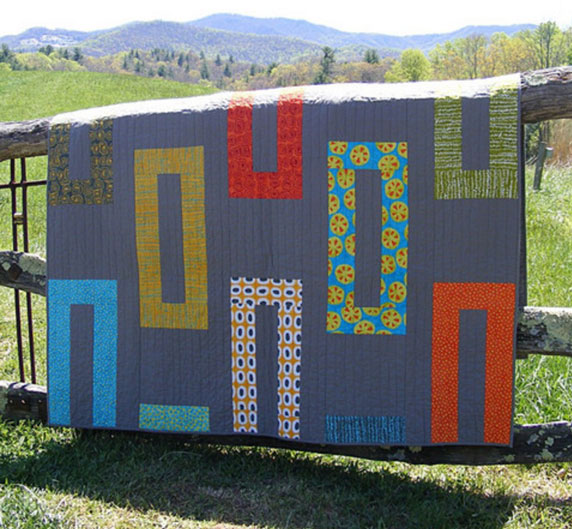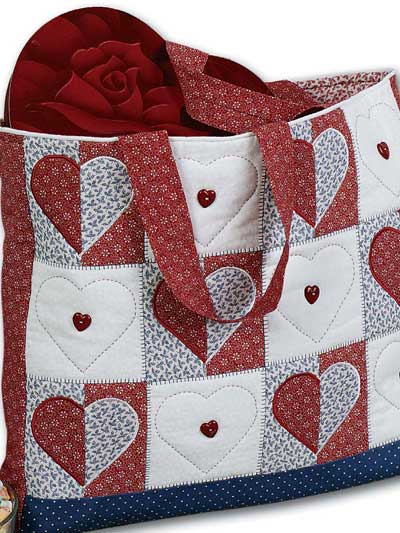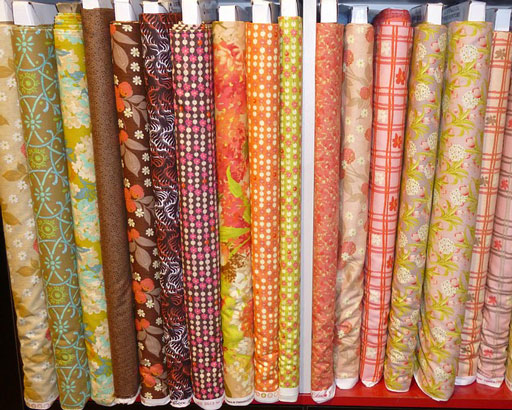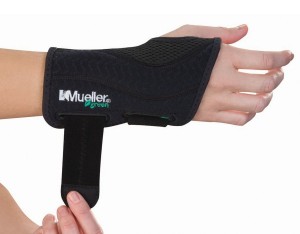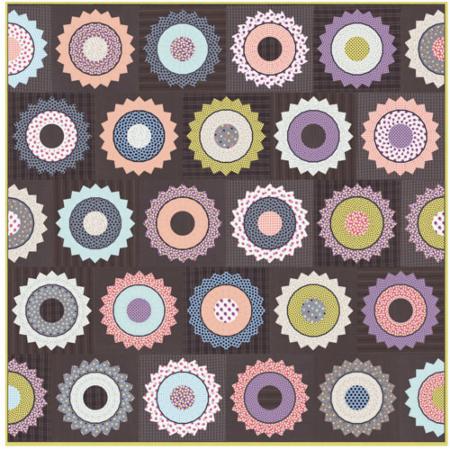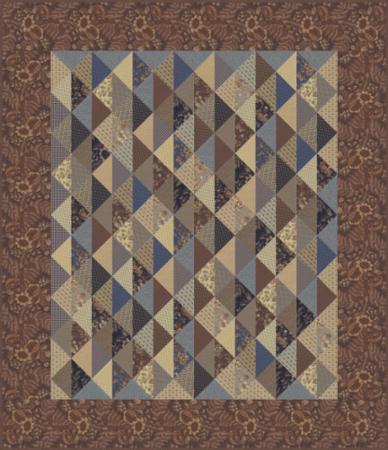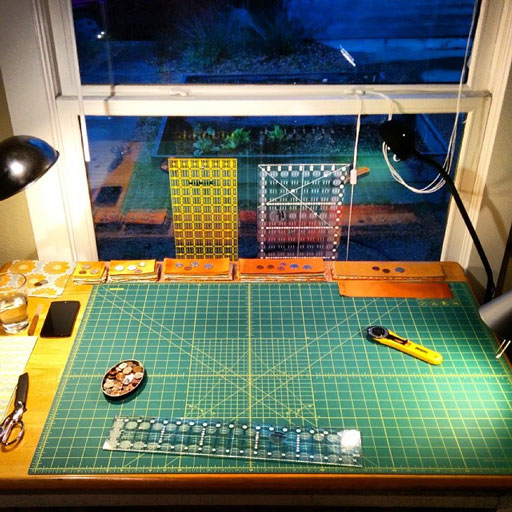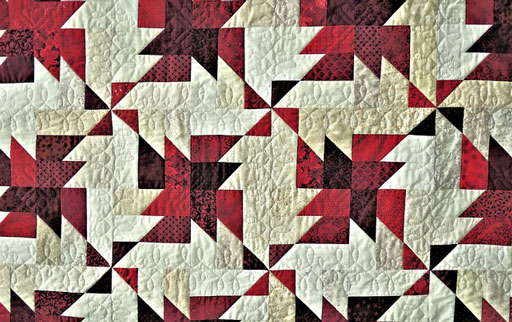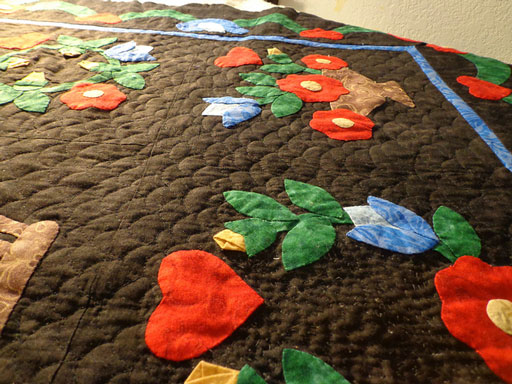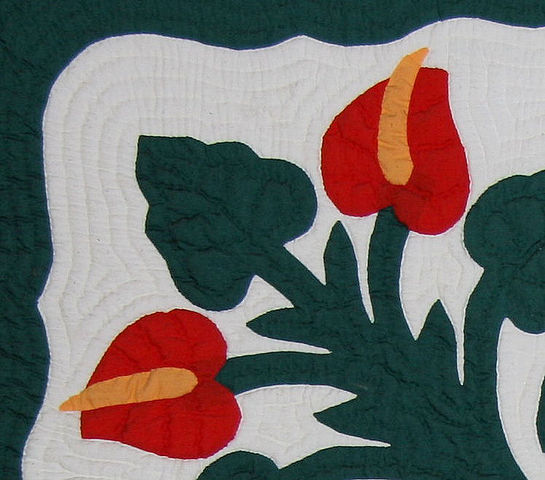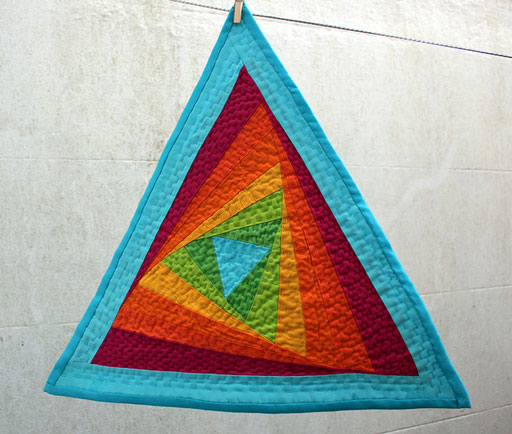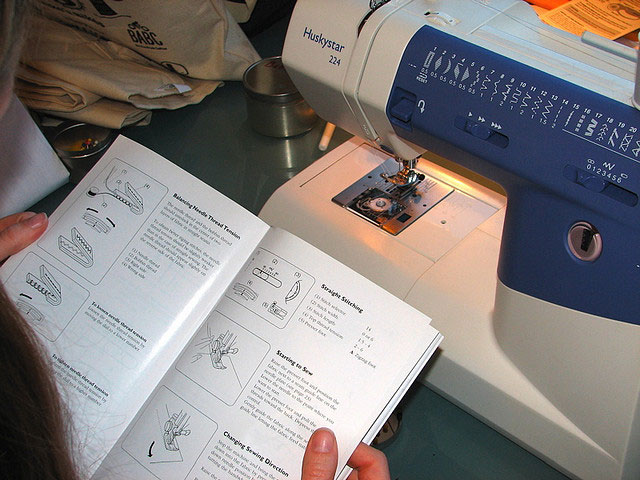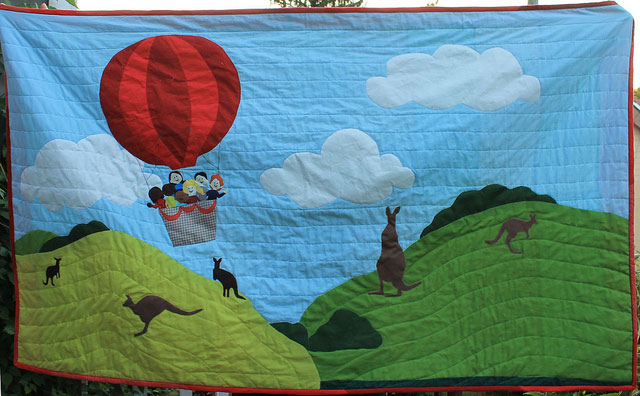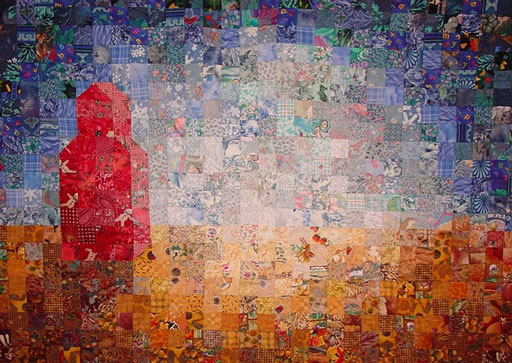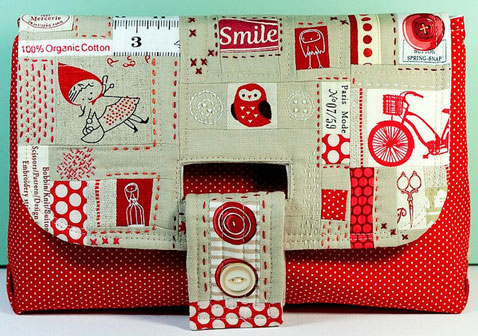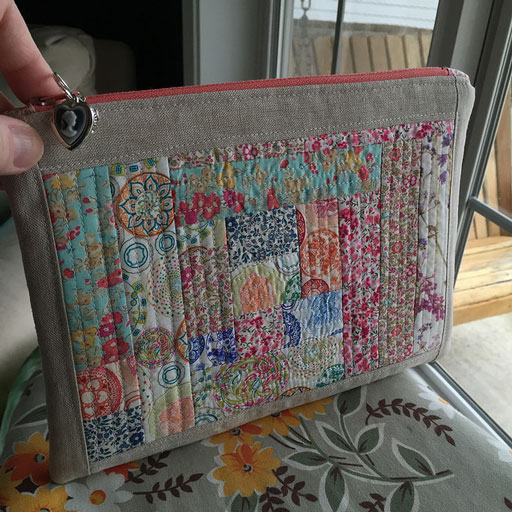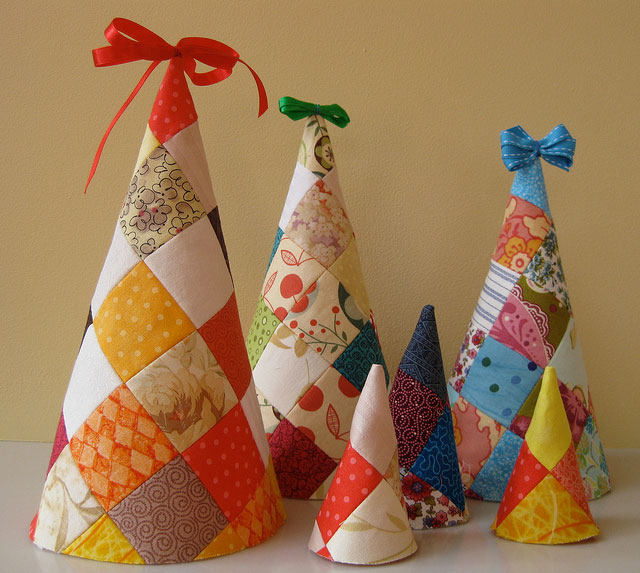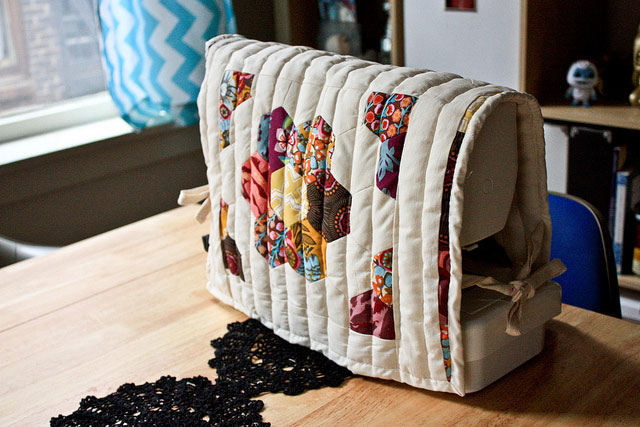Do you want to learn how to quilt? Because anyone is capable of learning quilting. The more important thing is to do it with love and dedication, because it requires a lot of precision in the tracing on the fabrics, the cutting, and sewing for creating designs with stitches all over the quilt.
Quilting is the art of combining fabrics in different colors, sizes and shapes to get a bigger project. “Properly” said, it is basically a sandwich of fabrics; the top quilt is for the designs we created and the backing is for closing and having a clean, finished result. For getting the traditional quilting result, you have to sew the desired design all over the quilting project.
The most popular types of quilts are:
- Classic Quilt:
- Patchwork: consist of cutting diverse shapes, like squares, hexagons, and triangles that will be put together in harmony, according to their shape and colors until we get the figure we desire.
- Appliqué: is about overlapping a defined figure on a bigger fabric that acts as the base. We can also apply different figures.
- Contemporary Quilt.
- Art Quilt.
Quilting Patterns
Quilting patterns may vary according to the type of project you are starting. You can find stencils for tracing on your fabric as a guide to quilt the design with stitches, or you can find others for patchwork that come with detailed instructions for cutting the fabric pieces and then assembling them. You can also find handy the quilting stencils, they will inspire you with some interesting designs to quilt over your projects.
When we talk about free quilt patterns for beginners, the possibilities you can find online are endless. I want to share now some of my favorites. Not all of them are free, but they are really worth it to pay for them. You are going to love them. You can also go to the sites that host these patterns and search for more.
Do you love maps? There is an awesome online store called Haptic Lab that sells different DIY kits. I fell for the maps. You have to check them. They’re all so beautiful! I selected my favorite ones to share with you.
DIY Constellation Quilt – Large
This is my favorite one, my number #1. I just love it! Don’t you think is adorable? You can have your own map of the stars in this bed-sized quilt. It comes with the two possibilities for selecting between the Northern Hemisphere and the Southern Hemisphere.
This is a project for advanced quilters. If you are a beginner that falls in love with quilting, then practice a lot, take classes, watch tutorials, practice, practice, and practice. I’m sure you’re going to be enjoying this quilt soon if you put your heart in it.
This kit includes a single-use, two-panel map template of the stars and sewing instructions. They also give you a list with the materials you need to buy.
DIY – Washington DC KIT
This is an intermediate level quilting project. The dimensions are 42″ x 36″ and it is perfect for decorating a wall in your home. The basic DIY kit includes a single-use map template and sewing instructions.
Orchard Lane
This is a beautiful bed quilt. It comes with detailed instructions to download in a PDF file. You need to register on their site. They have a lot of free patterns, so it’s fine to take the time and register.
The makings of a Farmer’s Wife
I really liked this Farmer’s Wife project. It has beautiful and vibrant colors. The instructions are easy to follow, and it fits a beginner level.
Buttonholes Quilt Pattern
This is a colorful and fun quilt. A perfect pattern for a beginner level, it comes with all the instructions you need for quilting this project in different sizes: napping, twin, queen, and King.
Quilt Bag DIY Tutorial + Pattern
This bag mixes the quilting techniques so well; it is the best to test your skills. This quilt bag DIY tutorial includes the pattern and step by step instructions with pictures.
Pencil Case Patchwork Tutorial
This adorable pencil case is a perfect handmade gift, or the best way to give your kids a personalized pencil case for school. The technique applied for the patchwork is going to be an interesting way to practice your skills in machine quilting. This pencil case tutorial is a perfect example of how quilting is a technique that can be used not only to make blankets. Combined with other sewing techniques, you can create a lot of useful and creative things.
Heart Tote Bag Pattern
If you love tote bags and hearts, this is a perfect project for you. The size of this tote bag is 16″x 15″x 2 1/2″. The heart tote bag pattern comes in a PDF file with a detailed explanation. You need to join the site to be able to download it, but it’s completely free.
Quilting Classes And Tutorials
Quilting can be tricky. Anyone can learn how to quilt, but if you want to make advanced projects, invest in a sewing quilting machine and dedicate in a serious way to this art. But if you have never used a sewing quilting machine or worked with so many different pieces of fabric, big projects, etc. then quilting classes and tutorials are going to be the best path to take.
Quilting Fabrics
The art of quilting was born because of the fabrics and the combinations created while trying to get different designs when the market did not offer so many options in patterns. It was a way to create your personalized quilt. If you are going to start this fascinating art, then you need to learn some tips when going to shop for quilting fabrics.
- Try to focus on a small store. If you go for the first time to a big one, the endless possibilities of fabrics will overwhelm you. It is better to have options you can get to know, so you can become familiar with the fabrics, and in a small local store, you will have better personalized attention, so you can ask all the questions you need.
- Don’t buy fabrics in online stores until you get familiar with the brands, the bundles, the materials and so much other stuff. First try to get to know things first hand.
- When we talk about fabrics, we are talking about an entire universe of different aspects that define them. For quilting, the best type is cotton. You want to buy the best material. After all the effort put in the making of your quilting project, you want to secure its durability.
- Leave the cheap fabrics for projects that are temporary.
Conversion Chart
When you start quilting, the first thing you notice when shopping for fabrics is that they talk in yards. Here is a conversion chart that will help you and guide you when you’re in your quilting projects.
| Inches | Yards | Meters |
| 4 1/2″ | 1/8 yard | .114 meters |
| 9″ | 1/4 yard | .229 meters |
| 13 1/2″ | 3/8 yard | .343 meters |
| 18″ | 1/2 yard | .457 meters |
| 22 1/2″ | 5/8 yard | .572 meters |
| 27″ | 3/4 yard | .686 meters |
| 31 1/2″ | 7/8 yard | .8 meters |
| 36″ | 1 yard | .914 meters |
| 40 1/2″ | 1 1/8 yard | 1.029 meters |
| 45″ | 1 1/4 yard | 1.143 meters |
| 49 1/2″ | 1 3/8 yard | 1.257 meters |
| 54″ | 1 1/2 yard | 1.372 meters |
| 58 1/2″ | 1 5/8 yard | 1.486 meters |
| 63″ | 1 3/4 yard | 1.6 meters |
| 67 1/2″ | 1 7/8 yard | 1.715 meters |
| 72″ | 2 yards | 1.829 meters |
Quilting for Beginners
Perfection is not what we look for in a quilting project, in fact there is a quilting technique called Crazy Patchwork where you don’t even need to use a pattern, and are free to quilt-as-you-go. Certainly the practice will take us to master a good technique, but the magic of the quilting is in its little imperfections. One thing: straight-line quilting is the best form for you to start with machine quilting.
Don’t feel intimidated or under pressure, trying to get something perfectly finished. Relax and enjoy!
I am going to try to give little pills of information that I think are important for a beginner.
These are the 4 common sizes for bed quilts:
- Napping (66.5″ wide x 70″ tall)
- Twin (66.5″ wide x 87.5″ tall)
- Queen (84″ wide x 94.5″ tall)
- King (101.5″ wide x 94.5″ tall)
Quilting Glossary Terms for Beginners
Learning more and more about quilting is exciting. Here are just a few terms that are commonly used in the quilting universe and are essential for beginners:
- Appliqué: attaching pieces of fabric onto a background fabric.
- Backing: this is the bottom of a quilt; normally it is made from a single cut of fabric.
- Bias: 45 degree diagonal direction on a piece of fabric.
- Batting: is the filling in the sandwich quilt. It is the layer between the quilt top and the backing.
- Binding: this is the strip of fabric that closes the quilt around, and it’s the final step in making a quilt.
- Block: is a unit; when it’s sew to other blocks, they become the quilt top.
- Fat Quarter: fabric measuring 18″ x 21″.
- Fat Eighth: eighth-yard of fabric cut to measure 9″ x 21″.
- Finished Size: the final size of a completed unit or block without seam allowances.
- Layout: the arrangement in which blocks are distributed and then sewn together.
- Motif: patch or piece used for appliqué.
- Panel: a piece of fabric printed with an image that can become the centerpiece of a quilt.
- Pin-baste: it is the use of curved safety pins to hold together the three layers of a quilt to help in the sewing process.
- Quarter Square Triangle: square made from four triangles.
- Quilt Kits: a package that contains the pattern and fabric required to make a quilt.
- Quilt Top: the upside of a quilt.
- Sashing: strips of fabric sewn between the blocks.
- Specialty Cuts: fabric yardage that is pre-cut in specific sizes.
- Template: shape used as a pattern.
Acronyms used by quilters
- DSM = Domestic Sewing Machine
- FQ = Fat Quarter
- HST = Half-Square Triangle
- LAQ= Long Arm Quilter
- LQS = Local Quilt Shop
- MAQ = Mid-Arm Quilter
- TOT = Tone-on-Tone
- WOF = Width of Fabric
One important thing you need to take care of from the beginning is your comfort while quilting. You need to take care of your back and your hands. Since this is a very relaxing activity, we tend to forget the time keeps passing by. It is not good for your body to keep your back in a bad position for hours. There are cushions that offer support to your back. This one is a great cushion for lumbar support:
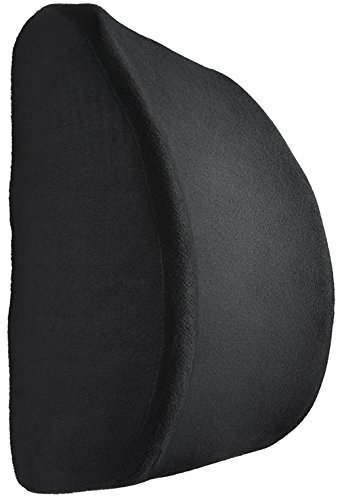
About the Product:
- Memory foam
- Comes with an adjustable elastic strap to easily fit any chair, and you can use it on your sofa.
Another important part of your body you need to take care, not only when you do quilting but when you knit, crochet, etc. is your hands. There are gloves that protect you when you do hand quilting by giving support to your wrists. Some even offer thumb support.
Quilting Kits
There is no doubt that quilting requires a lot of time for completing the projects. If you add the time for designing the layout, choosing the fabrics, the threads, etc. for some of us it is impossible to take all these steps. There is a solution for this. Quilting kits come with all you need to complete a quilting project, usually just missing the backing in certain projects. Like cushions, they don’t come with the filling.
Here are some beautiful kits you can try as your next quilting project.
Moda Quilt Kit – Gardenvale
The Gardenvale Quilt Kit includes everything you need. Finished size 80″ x 80″
My Kimono Girl Cushion Kit
This adorable adorable kimono girl cushion can be a perfect birthday gift. The finished cushion measures 18 inches by 14 inches.
Moda Quilt Kit – Eliza’s Indigo
I love the colors of this Eliza’s Indigo quilt kit. It includes everything you need, even the quilt pattern. The finished size is 80″ x 92″
Stained Glass Star Quilt Kit
This Stained Glass Star Quilt Kit comes with the fabrics for the quilt top and binding. The quilt size is 45″x 45″.
Quilting supplies
You don’t need to buy all the things you can find in stores. Don’t stress yourself thinking you won’t get great results if you don’t take half the store with you. I promise, with some basic quilting supplies, the job is going to be done. The key to success is to be creative and persistent. Did I say you need to practice a lot? A lot of practice, patience, love, and this list of the most basic supplies. Remember, if you are going to be doing machine quilting, you need to choose the best sewing machine for you.
Now, some recommended quilting supplies:
- A rotary or circular cutter
- An acrylic ruler for patchwork
- Cutting mat
- Color Wheel Selector
- Quilting paper
- Quilter gloves or rubber finger tips
- Scissors
- Seam ripper
- Straight pins
- Safety pins
- Thimble
- Hoop or stand for hand quilting
- Patchwork presser for the sewing machine
- Templates for hand or machine quilting
- Walking or even-feed foot for machine quilting
- Free motion foot (darning foot) for free motion quilting
- Fabrics: you can make your quilt using 100% cotton, polyester or blends with these two materials. You will need several different fabrics for the top, and for the back and border of your quilt, stick to primary, simple fabrics
- The filling: also known as wadding, boata, or batting
- Threads: all-purpose thread for piecing and assembly, specialty threads for appliqué projects, all-purpose or monofilament thread for machine quilting
- Iron
Quilting Blog Posts
We have written some quilting blog posts, where you can get more knowledge, tips or interesting, specific information.
Quilting Techniques
There are different quilting techniques, as a beginner is important to research all the time and read all the interesting information related to quilting world to understand more and get to know better this fascinating art.
- Applique: it is the technique where small pieces are sewn to a bigger piece (background).
- Reverse applique: a ground fabric is cut, and another piece of fabric is placed under. The edges of the ground fabric are dissembled under and the newly folded edge is sewn down to the lower fabric.
- Trapunto: is a technique with relief. It is like a filling that elevates the portion quilted.
- Embellishment: additional decorative elements are sewn to a quilt top.
- English paper piecing: is a hand sewing technique where paper forms are cut the exact dimensions of the desired pieces. Then the fabrics are basted to these papers. Contiguous units are then placed facing each other, and the seam is tightly stitched together. When a given piece is completely surrounded by all the contiguous shapes, the basting and the paper shapes are removed. This is the technique used to quilt hexagons.
- Foundation piecing: this technique allows maximum stability of the work. It uses a numbered paper or muslin pattern as a “foundation” for piecing the quilt block. The piecing is created without any distorting effect, ensuring crisp, precisely-pieced blocks.
Hand Quilting
Hand quilting can be the best way for making small appliqué projects, also for baby quilts, potholders, etc. If you have the time, patience, and love for quilting, you can make bigger projects too. The main thing is to remember: if you want to hand quilt without pain, the thimble will be your best friend.
You can also hand quilt without a hoop, it depends on how you feel more comfortable while working.
Good light, enough space to work, good support for your back, and even music can be additional things for hand quilting. Relax and enjoy what you are doing and take breaks for walking and stretching your arms and legs.
Pay special attention. Some patterns need to be traced with a pencil or a washable marker onto your quilt before starting the basting.
If you are a beginner, stick to easier designs or patterns, like stars, hearts, leaves, flowers, etc.
Once you learn how to hand quilt and practice a lot, move to the next level. Also, you can practice using old t-shirts and other pieces of fabric you have at home.
Machine Quilting
Machine quilting is perfect for larger projects that will take a century to be made with hand quilting. If you got to choose the best set sewing machine for you, then let’s talk about some tips that can help you a little bit with machine quilting.
If you want to learn how to machine quilt, it’s important that you get to know your sewing machine. Read the manual that comes with it. You can also share some tea and cookies; be nice to your sewing machine; it is your new friend!
Before you start with your machine quilting, take of your shoes! This will give you more control over your foot pedal.
Set the stitch length to zero. It is better when it is loose. When you’re doing free motion machine quilting, it is you who moves the fabric, and you need to check your tension.
When you’re starting the sewing, hold the top thread and by hand push the sewing machine needle into the fabric and up comes the bobbin needle; that way you can have them both on top, and you can hold them while you’re quilting, and when you just made a few stitches, you can tie them together.
When you get close to a spot where there is a safety pin, stop, take it out and then keep going.
Top 5 tips for machine quilting:
- Use large works surfaces.
- The goal speed for machine quilting is 8-10 stitches per inch.
- Try not to stop while quilting along the seam, because it will be noticeable.
- When you start quilting a line, lock your stitches. About 3 stitches in the same spot will do the job.
- Use a free motion quilting foot for your machine. This will allow you to see where you’re quilting.
Quilting Designs
Quilting is an art that can be used to create not only quilts, but so many other things, like cushions, pillows, bags, covers, and plenty of decorative elements for your home. Here are some quilting designs we love and will inspire you.
Quilt Blankets
In the quilting world the most popular projects are the blankets. you can find so many beautiful creations to please your eye and find inspiration to make your own blankets. Take a look to this small selection of great blanket designs.
Pouches and Clutches
Decorative Quilting
We just hope you love quilting and found these tips and information useful. There is a whole universe about this fascinating art. Don’t forget the key is to practice a lot, but most of all, relax, enjoy, and love what you do.


